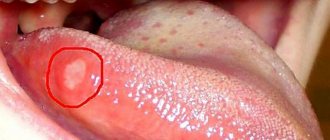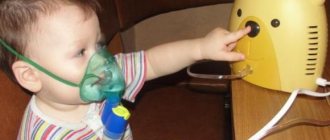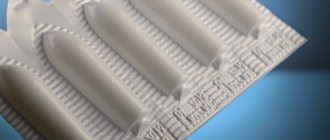Types of bleeding
To provide competent first aid, the person who has taken responsibility must know what kind of case he is faced with in a particular situation.
Capillary bleeding
Characterized by minor tissue damage. Important vessels or organs are not affected.
Procedure:
- Raise the limb higher to drain blood away from the injury site.
- Disinfect the wound.
- Bandage.
Venous bleeding
To stop blood loss, a pressure bandage is applied from several layers of clean fabric and a homemade cotton wool pad pressed against the site of the rupture of the flesh.
External pressure helps the formation of blood clots, which clog the sites of damage to the venous walls.
A sealed bandage is required that cannot be undone independently. If the gauze is completely saturated with blood, the best solution is to add a bandage on top.
Arterial bleeding
Minor injuries require a pressure bandage, similar to vein injuries.
If the case is serious, the bleeding must be stopped immediately. In the femoral artery, it is enough to pinch the artery with a finger or fist. Clamps are used only by a doctor.
Rules for applying a tourniquet
There are several types of tourniquets, each of which has its own characteristics when applied and fixed. Among them, it is worth highlighting the following options:
- An Esmarch turnstile is a thick rubber tube with a chain attached to one side and a hook to the other.
- A ribbon tourniquet is a rubber strip 3-5 cm wide. After finishing the dressing, tie a knot.
- Twist - a strip of durable material 1 m long, 3 cm wide with a loop. To secure the tape, insert a stick into the loop and begin to wrap the tape around your hand. After finishing the dressing, the stick must be secured with a bandage.
A tourniquet is used to stop the fountain of blood that flows from the damaged artery. It is used only in cases of severe damage to a large vessel, when other measures to stop arterial bleeding have been ineffective. This is explained by the fact that the tourniquet not only strongly compresses the blood vessels, but also the surrounding tissues, which disrupts the supply of nutrients to the damaged area.
Articles on the topic
- Surgery for cerebral stroke - in what cases and to whom is it prescribed, contraindications for the procedure
- Brain stem stroke - first signs and manifestations, drug therapy, surgery
- Cerebral edema during stroke - types, first manifestations, treatment methods, consequences and prognosis
In case of arterial bleeding, the tourniquet should be applied above the damaged area: if the leg is injured - on the thigh, the arm - on the upper third of the shoulder (cannot be applied in the middle, since the radial nerve can be damaged). If the damage is severe, it may be necessary to apply two rubber bands. The tourniquet in the head area should not be tightened too much, as it can cause suffocation or cerebrovascular accident.
Before you begin applying the tourniquet, it is necessary to take into account that the damaged area must be in an elevated position. This means that if the leg is injured, it is raised and fixed above the level of the body. Next, you need to apply a tourniquet for arterial bleeding according to the following scheme:
- Use your finger or fist to compress the damaged artery.
- Disinfect the area.
- Apply cloth or gauze to the injured area, not reaching the wound, to protect damaged tissue from infection and additional injury that may occur when applying rubber.
- Bring the tourniquet to the injured area, apply 2-5 cm above the wound. If it is missing, a belt, thick rope, or scarf will do.
- Tighten the rubber a little and wrap it around the limb 2-3 times. In case of arterial bleeding, you need to tighten the tape tightly so that the bleeding stops, but do not put too much pressure on the tissue. The first wrap should be the tightest, the others should be looser, and care must be taken not to pinch the skin during wrapping.
- After applying the tape, you need to tie the ends, secure with a hook or chain.
- Make sure that the patient does not move the injured limb until he is taken to the hospital.
- The area on which the bandage is applied should not be completely covered with clothing, so that after the patient is in the hospital, the medical staff will immediately detect the wound. However, in the cold season, the victim should be warmly wrapped, especially the injured area.
- If the rubber is applied correctly during arterial bleeding, the pulse on the damaged vessel disappears, the area below the ligation site turns pale, and the flow of arterial blood stops.
Features of use
After dressing, place a piece of paper under the tourniquet indicating the time when it was applied. This information is necessary for doctors to prevent tissue necrosis, which can develop in the bandaged area due to the lack of supply of nutrients to it. The application of a tourniquet in summer and winter is different, since the cold stimulates tissue necrosis. For this reason, the maximum time for applying a tourniquet in summer is two hours, in winter – sixty minutes.
If this time needs to be extended (for example, it is not possible to deliver the patient to the hospital on time), the rubber must be loosened for 15-60 seconds so that the bloodless tissues receive a flow of arterial blood. At the same time, press the ruptured vessel with your finger. Then tie the rubber tightly again. If arterial blood begins to ooze, another tourniquet is applied.
After applying the rubber, it is imperative to take the victim to the hospital, where the doctor will apply stitches and take other measures aimed at healing the vessel. Severe blood loss requires a blood transfusion. If the patient does not receive medical assistance after applying a tourniquet, the cells begin to die. After 8-10 hours, a critical situation occurs when irreversible tissue necrosis begins, which leads to gangrene. In this case, in order to save a human life, it is necessary to amputate a leg or arm much higher than the site of injury.
Hard to reach places
If there is bleeding from the femoral, carotid or muscular artery, the patient can die within two minutes, so you need to act as quickly as possible. Another difficulty is that applying rubber to these areas is much more difficult than applying rubber to an injured limb. The rules for applying a tourniquet for arterial bleeding caused by a neck injury are as follows:
- The artery is pressed with a fist.
- A cotton-gauze pad is applied to the wound.
- Fix the neck, head and shoulder using a Kramer splint or other device that is used to immobilize a limb in case of fractures.
- If there is no splint, you need to take the victim’s hand and place his forearm on his head so that the shoulder begins to act as a counter-support. In addition, you can use a board 60 cm long and 8-10 cm wide, placing it on your shoulder and head.
- The roller is pressed on the side of the wound, after which a tourniquet is applied in one or two turns.
If the artery is damaged, the patient's hips are immobilized. The femoral artery is pressed with a fist against the pubic bone under the inguinal ligament. If a person is thin, the vessel can simply be pressed against the thigh. Then the tourniquet is applied according to the following scheme:
- Raise the leg, you can press it to the stomach with the bend of the limb.
- Apply a roll of bandage to the wound.
- A tourniquet is applied 2-5 cm above the wound. To do this, take it by one edge and the middle, stretch it, bring it under the damaged area, make several turns, and secure it.
Danger of arterial bleeding
The difficulty with arterial injury is the high rate of blood loss. In the absence of medical care, in the first minutes after injury, the heart ceases to have enough fluid volume for normal functioning, and it stops.
The walls of the arteries are harder and less elastic than those of the veins, and the blood pressure is higher. Because of this, ordinary finger clamping is difficult to carry out for a long time, so a tourniquet is required and subsequent prompt assistance from a doctor. The surgeon ligates the artery separately or applies sutures.
The more complex the injury, the longer the search for a ruptured vessel. Internal bleeding requires an additional incision.
Applying an artery tourniquet is not a panacea. After a period of 8 to 10 hours, in the absence of normal blood flow in the limb, necrotic processes begin, leading to gangrene and amputation.
With types 3 and 4 of blood loss, the patient is prescribed a transfusion to restore heart function.
Errors when applying a tourniquet
To stop the flow of arterial blood, the rules for applying a hemostatic tourniquet should be strictly followed. In critical situations this is not easy to do, especially for beginners. During dressing, you should adhere to the following rules:
- If you do not have a special tourniquet at hand, in case of arterial bleeding, it is forbidden to use narrow material - rope, cord, wire, or a narrow belt - to close the site of a breakthrough. It cuts into the skin and accelerates tissue death. A medical tourniquet can only replace material at least 5 cm wide.
- It is strictly forbidden to apply rubber directly to the site of arterial rupture. To stop bleeding, the tape is wound around an area located 2-5 cm from the wound.
- You cannot remove the tourniquet yourself. This must be done by a doctor in a clinical setting. Otherwise, there is a high probability of infection getting into the exposed wound and repeated bleeding.
- Do not tighten the tape too much or make the bandage too loose when applying a tourniquet for arterial bleeding. In the first case, there is a high probability of accelerating tissue atrophy and necrosis due to lack of nutrition. In addition, nerves may be compressed, which can cause paralysis. If the tourniquet is too weak, the rubber can cause swelling and increased hemorrhage.
- The maximum time for applying an arterial tourniquet is 2 hours, otherwise gangrene will begin.
- If there is a delay in sending an injured person to the hospital, the rubber must be periodically loosened for 30-60 seconds. In winter every half hour, in summer - every 45 minutes. In this case, be sure to press the ruptured artery with your finger.
Common symptoms of bleeding
Visual signs recorded by the doctor:
- pale skin due to a decrease and outflow of a significant volume of blood;
- perspiration, cold sweat;
- tachycardia, the heart speeds up due to lack of fluid;
- pressure in the arteries drops.
Internal sensations of the victim:
- severe fatigue, a person feels sick;
- inability to move your head or make active movements due to dizziness;
- the eyes become dark, spots appear;
- I can’t take a deep, full breath.
Based on the location of bleeding, they are divided into:
- external;
- internal.
In the first case, blood flowing from the vessel is visible.
The second type can only be diagnosed by a doctor based on the composition of the discharge and assessment of the appearance of the body.
Providing first aid for bleeding
It is important to act quickly to stop bleeding from the artery. Panic is unacceptable: it slows down the reaction and contributes to the occurrence of errors.
The procedure is as follows:
- The first aid provider must take care of his own safety. Do not allow the victim’s blood to come into contact with mucous membranes or open wounds. Simple prevention in the form of sterile rubber gloves protects against HIV and other diseases.
- If fainting occurs, the unconscious person is placed so that the head is lower than the body. The limbs are lifted in turn, increasing blood flow to the torso, where vital organs are located.
- The nature of blood loss is analyzed. If it is massive, then the patient requires qualified assistance from a doctor or paramedic. Before their arrival, the blood flow is blocked using available methods.
- To stop bleeding, both finger pressure and a clamp are used.
- The damaged limb is elevated, which promotes the rapid formation of blood clots and the natural “repair” of the vessel.
- A tourniquet is applied to stop the bleeding. Be sure to save the procedure time so as not to overextend your arm or leg.
- If limbs are injured, the victim is given water or tea to replenish fluid loss.
A tourniquet is used only when other means of stopping the blood do not work.












